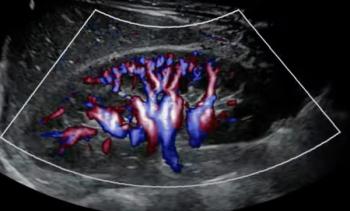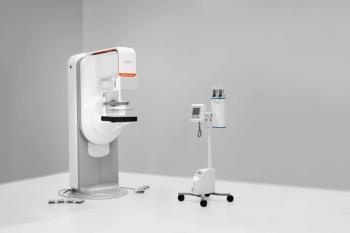New DEXA Scan Study Links Thyroid Medication Levothyroxine to Higher Bone Loss Risk in Seniors
Use of the medication levothyroxine, commonly prescribed for hypothyroidism, was associated with greater long-term loss of total body bone mass in seniors, according to new DEXA research to be presented at the Radiological Society of North America (RSNA) conference.
It has been estimated that 23 million Americans take daily levothyroxine, which is indicated for hypothyroidism, but new research to be presented at the
For the study, researchers compared dual X-ray absorptiometry (DEXA) scan data for 81 patients using levothyroxine and 364 control patients. The total cohort had a median age of 73 and a 2.35 thyrotropin (TSH) level at the initial visit, according to the study.1
Noting a median 6.3-year follow-up, the researchers found that patients in the levothyroxine cohort had greater longitudinal loss of total body bone mass (beta coefficient: -6.53) and density (beta coefficient: -0.0014).1
“Our study suggests that even when following current guidelines, levothyroxine use appears to be associated with greater bone loss in older adults,” noted Shadpour Demehri, M.D., a co-senior author of the study and a professor in the Johns Hopkins Medicine Department of Radiology and Radiological Science.
(Editor's note: For more content from the Radiological Society of North America (RSNA) conference, click
The association between levothyroxine and longitudinal loss of total body bone mass was stronger with higher use of the medication. The researchers noted beta coefficients of -12 and -8.23 for total body bone mass loss at the second and third tertiles, respectively, of the mean average serum-free thyroxine (FT4) level.1
“The more pronounced effects at higher levels of FT4 suggest that LT4 use may be associated with a relative excess of thyroid hormone in some older adults on therapy, even with TSH levels within the reference range,” noted lead study author Elena Ghotbi, M.D., and colleagues.
Reference
1. Ghotbi E, Ibad H, Xue Q, Mammen J, Demehri S. Levothyroxine use and bone loss in euthyroid older adults: a longitudinal analysis from Baltimore longitudinal study of aging. Poster to be presented at the Radiological Society of North America (RSNA) 2024 110th Scientific Assembly and Annual Meeting Dec. 1-5, 2024. Available at:
Newsletter
Stay at the forefront of radiology with the Diagnostic Imaging newsletter, delivering the latest news, clinical insights, and imaging advancements for today’s radiologists.





























